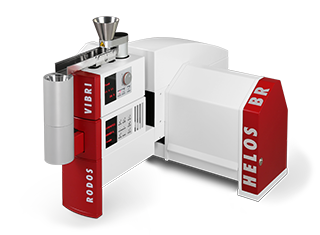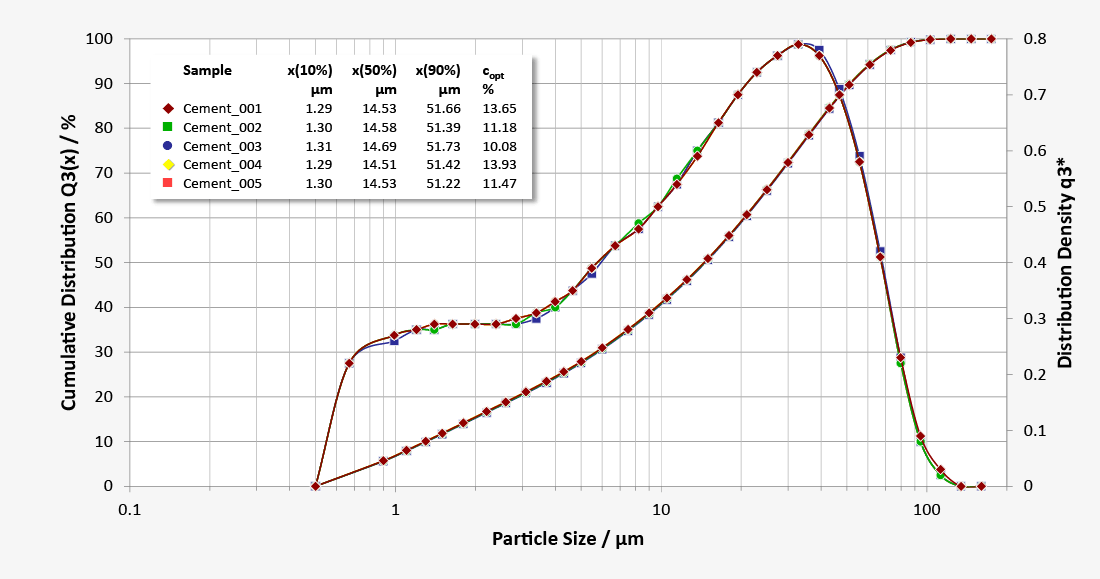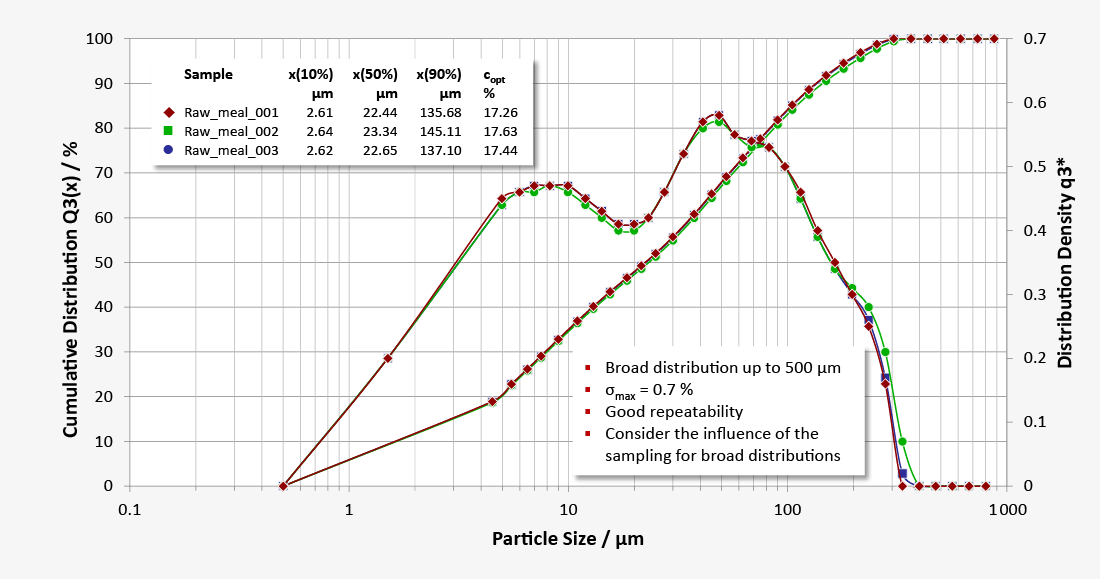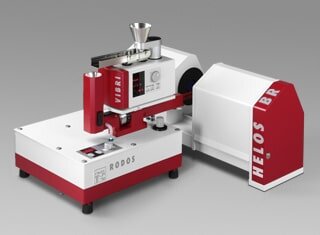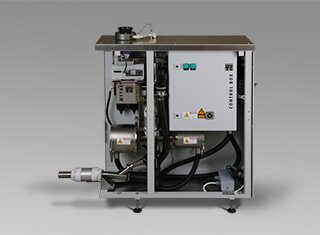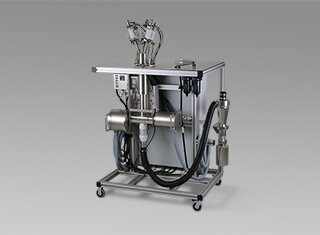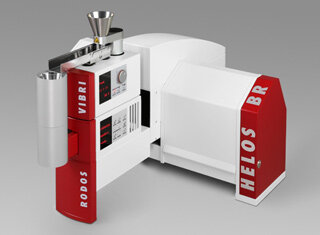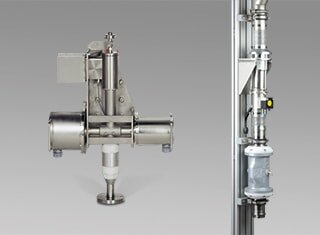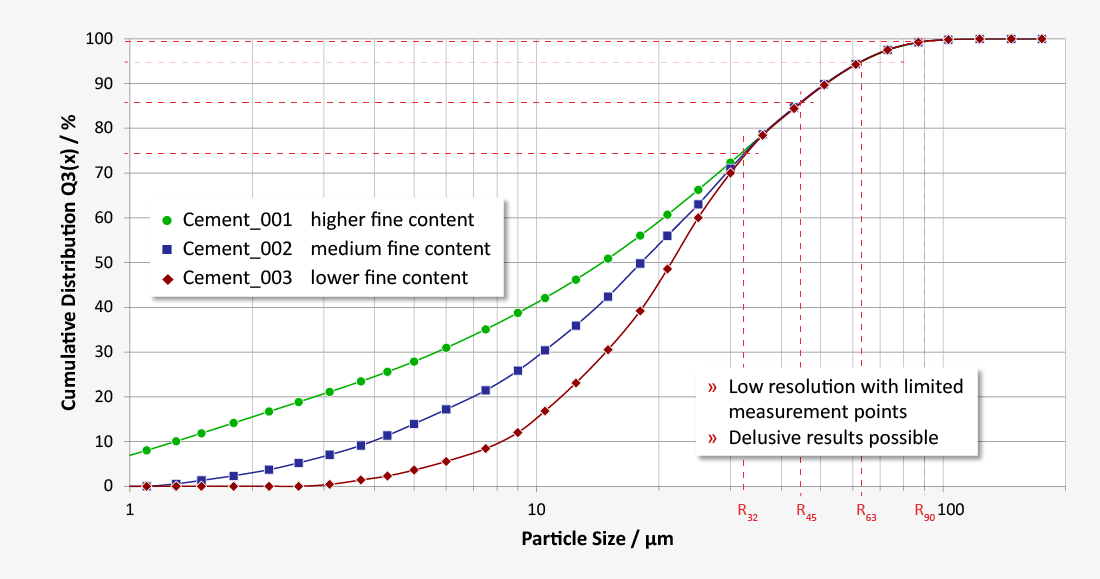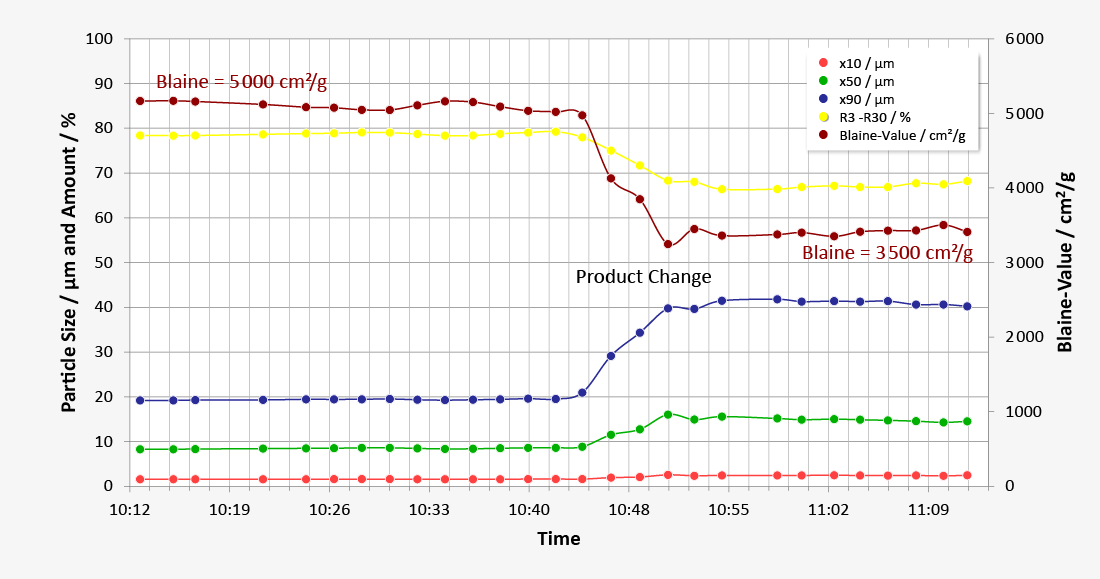Using particle size analysis to control the product properties of cement
Industrial, business or residential buildings, arenas, traffic routes or infrastructure projects – contemporary architecture with its modern buildings is unimaginable without cement-bound materials. As a versatile and permanent binder for concrete, plaster, mortar or screed, cement is one of the most important and mostly used building materials worldwide. By addition of water, cement turns into cement paste, which hardens through hydration to durable cement stone. The cement industry faces challenges such as assurance of consistent, grade-specific quality and furthermore energy and resource efficiency.
The main ingredients of cement, which are responsible for the hardening properties, usually give their name to the different types of cement: Portland cement clinker, granulated slag, pozzolanic cement, fly ashes, burnt shale, limestone or silica fume. In addition to standard cements with different consistencies there are a variety of cements for specific applications with special characteristics such as early or fast setting, low hydration heat, high sulfate resistance or low alkali content.
Responsible for quality and uniformity of the different cement types is most of all, (next to the chemical composition of raw materials), the grain size distribution of cement, which is a result of the component’s grinding fineness. If the cement’s chemical composition doesn’t vary, only the grinding fineness determines the strength class: The higher the grade of fineness, the faster the development of solidification and the higher the compressive strength after 28 days.
Secondary components, such as ground inorganic or mineral raw materials, improve cement’s physical characteristics due to their grain size distribution. Grinding additives or separate grinding of single components also improve the cement properties in regards to workability, water retention capacity, strength or shrinkage and swelling.
During the grinding process from raw material to raw meal as well as during fine grinding of burnt clinker with additional primary components or additives, monitoring and control of grinding grade is crucial for assurance of cement quality and production efficiency. About half of the production cost in the cement industry is energy consumption – primarily during burning and grinding. Prompt and precise control of cement grinding and material testing not only avoids energy and cost intensive overgrinding, it also allows cement grade changes in a very short time within one plant with only small amounts of out-of-spec material.
While traditional procedures of fineness measurements, like sieving or the determination of cement powder’s specific surface using the Blaine-device, only deliver single values after time-consuming analyses, laser diffraction analysis evaluates the entire grain size distribution in high resolution without operator influence. The grinding grade, too high or too varying fine content (< 2 µm) or coarse content are detected reliably and promptly. With a powerful dry dispersion, laser diffraction offers an unrivalled sensitivity and high reproducibility over the entire cement particle size range with user-independent measurements in a matter of seconds.
- Monitoring fineness of raw meal and cement by grain size distribution
- Reliable analysis of grain size distribution within seconds with laser diffraction and dry dispersion
- Continuous and prompt control during grinding and screening guarantees stable product quality, avoids overgrinding and reduces energy consumption
- User-friendly laser diffraction systems in quality laboratories with high availability and high sample throughput without elaborate sample preparation
- Low-maintenance systems for integration into laboratory automations to perform high-frequency analyses (e.g. Polysius POLAB® ACT/AMT/Shuttle, FLSmidth QCX/RoboLab®)
- Connection of robust process measurement technology to the control systems enables plant control and process optimization in real time
Better particles with best instruments
Sympatec’s laser diffraction systems cover the entire spectrum of particle size analysis in the cement industry. As a pioneer of dry particle measurement technology we are established on the international cement market with numerous product and process specific installations. Applications in quality laboratories (off-line), fully integrated installations in laboratory automations (at-line) or particle size distribution measurement in real-time directly during grinding and screening (on-line) ensure best product quality with prompt production intervention. Dry measurement enables high sample throughput with minimal sample preparation and little cleaning effort.
Robust instrument design and professional system maintenance by our qualified service employees ensure a lasting, outstanding quality and intrinsic value of the systems. Internationally operating cement producers with widely spread production locations trust our expertise as well as medium-sized or smaller specialty suppliers of general cement and specialities. Leading providers of turnkey ready cement plants and laboratory automations value us as original equipment manufacturer for the integrated laser granulometry.
Download application note for detailed information
Are you interested in additional content? Please register an account. After confirming the registration link brochures, application notes and other documents on particle measurement will be available for download.
Application strengths
- Modular adjustable measuring systems for changing measuring tasks
- Product specific and reliable dry dispersion
- High sample throughput without elaborate sample preparation
- Complete and reproducible dispersion in aerosol free jet
- Grain size analysis within seconds, even with large sample amounts
- High sensitivity over the entire measuring range
- Long lifetimes and high availability
- Reliable automatic cleaning
- Maintenance and user friendly | Low maintenance requirement
- Automatic transmission of selected measuring values to process control system
Customer benefits
- Optimization of process control through prompt monitoring of grinding fineness of raw meal and cement
- Faster availability of results for quality and process control
- Assurance of a consistently high product quality
- Reduction of energy consumption by avoiding overgrinding
- Maximum utilization of raw materials
- Decrease of out-of-spec material during type changes
- User-independent, fast and reliable measuring results
- Outstanding reproducibility of measuring results and comparability of system-to-system or location-to-location
Application strengths
- Compact, fully-integrated solution for laboratory automation with dust extraction
- Fully automated sample splitting and feeding for increased sample throughput
- Product specific and reliable dry dispersion
- Complete and reproducible dispersion in aerosol free jet
- Fully automated cleaning and reference measurement before each measurement
- Grain size analysis within seconds, even with large sample amounts
- High sensitivity over the entire measuring range
- Long lifetimes and high availability
- Maintenance and user friendly | Low maintenance requirement
- Automatic transmission of selected measuring values to process control system
Customer benefits
- Prompt optimization of process control through high frequency monitoring of grinding fineness of raw meal and cement
- Faster availability of results for quality and process control
- Assurance of a consistently high cement quality
- Reduction of energy consumption by avoiding overgrinding
- Maximum utilization of raw materials used
- Decrease of out-of-spec material during type changes
- User-independent, fast and reliable measuring results
- Outstanding reproducibility of measuring results and comparability of system-to-system or location-to-location
Application strengths
- Plant control in real-time by integration of measuring system into process and leading systems
- Representative sampling, sample splitting directly next to product flow
- Product specific and reliable dry dispersion
- Complete and reproducible dispersion in aerosol free jet
- Fully automated cleaning and reference measurement before each measurement
- Grain size analysis within seconds, even with large sample amounts
- Additional measurement of single samples in manual off-line mode possible
- High sensitivity over the entire measuring range
- Long lifetimes and high availability
- Maintenance and user friendly | Low maintenance requirement
- Automatic transmission of selected measuring values to process control system
Customer benefits
- Monitoring and control of grinding process during ongoing production
- Assurance of a consistently high product quality
- Reduction of energy consumption by avoiding overgrinding
- Secure and fast achievement of varietal purity production by monitoring and control of type changes in real-time
- Decrease of out-of-spec material during type changes
- Reduction of effort for out-of-spec process and mixing of out-of-spec cement
- Optimal utilization of raw materials used






